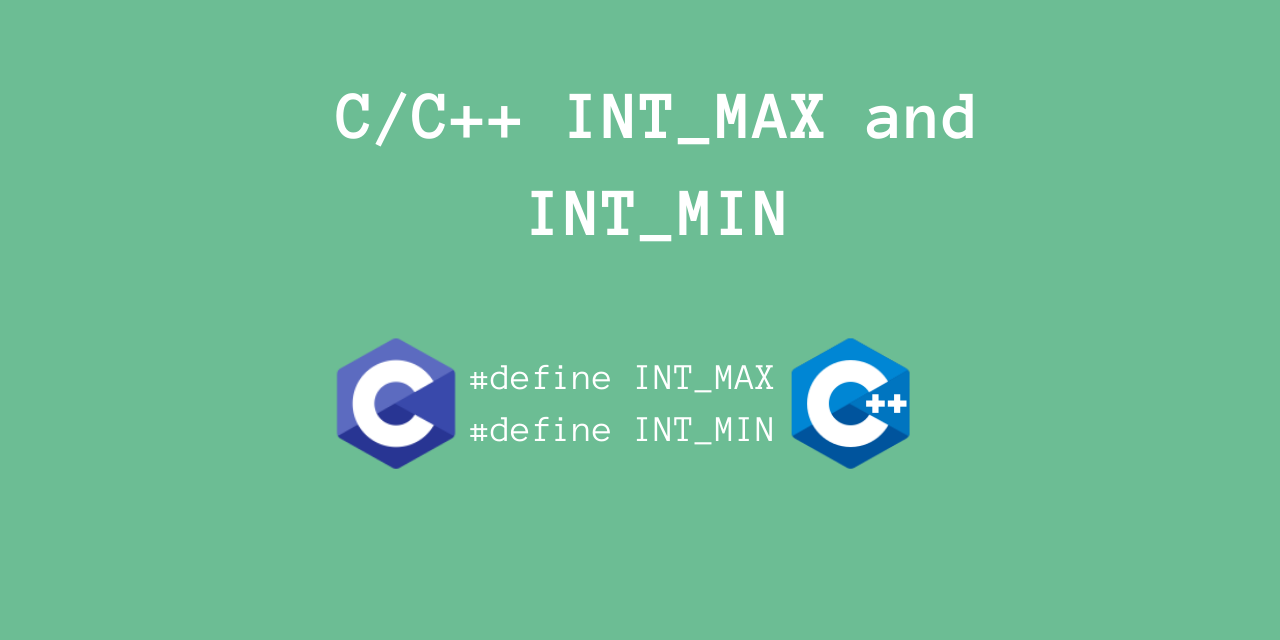- Log in to:
- Community
- DigitalOcean
- Sign up for:
- Community
- DigitalOcean
By Vijaykrishna Ram

In this article, we’ll take a look at using INT_MAX and INT_MIN in C/C++.
These are actually useful macros which represent the maximum and minimum integer values.
Let’s take a look at it, using some examples.
Using INT_MAX and INT_MIN
INT_MAX is a macro which represents the maximum integer value. Similarly, INT_MIN represents the minimum integer value.
These macros are defined in the header file <limits.h>, so you must include it.
#include <limits.h>
INT_MAX
INT_MIN
Note that any integer variable must lie between INT_MIN and INT_MAX.
Typically, integers are stored as 4 bytes (32 bits).
This means that in almost all machines, the maximum integer value will be 2^(31) - 1 = +2147483647.
The minimum integer value will be -(2^31) = -2147483648
Let’s verify this, for our machine.
#include <stdio.h>
#include <limits.h>
int main() {
printf("Maximum Integer Value: %d\n", INT_MAX);
printf("Minimum Integer Value: %d\n", INT_MIN);
return 0;
}
Output
Maximum Integer Value: 2147483647
Minimum Integer Value: -2147483648
Indeed, we get what we predict.
Let’s now take another example, to correctly predict any integer overflow or underflow.
#include <stdio.h>
#include <limits.h>
int main() {
int value = 0;
while (value >= 0) {
// Check for overflow
if (value == INT_MAX) {
printf("value = %d. Possible overflow!\n", value);
}
value ++;
}
printf("Now, value = %d\n", value);
value = 0;
while (value <= 0) {
// Check for underflow
if (value == INT_MIN) {
printf("value = %d. Possible underflow!\n", value);
}
value --;
}
printf("Now, value = %d\n", value);
return 0;
}
Output
value = 2147483647. Possible overflow!
Now, value = -2147483648
value = -2147483648. Possible underflow!
Now, value = 2147483647
While this takes a good few seconds to run, this does indeed do what we expect.
The integer will overflow to INT_MIN, and will underflow to INT_MAX.
This is useful to detect such jumps in the values.
Why do we need these macros?
Often, for certain algorithms, it is sometimes necessary to initialize a variable as the lowest/highest value.
The number of bits of the datatype may differ based on the machine.
To make the usage of the maximum/minimum values be consistent, it would be convenient if everyone could use the same macros!
This is exactly why these kinds of macros exist -
- To spare you from remember the actual values
- Have consistent programming patterns across all machines
- Very convenient to use
Hopefully, these reasons may convince you to use such kinds of macros whenever you build your own C/C++ library.
Conclusion
In this article, we learned about using the INT_MAX and INT_MIN macros in C / C++.
For similar content, do go through our tutorial section on C programming.
Thanks for learning with the DigitalOcean Community. Check out our offerings for compute, storage, networking, and managed databases.
About the author
Still looking for an answer?
Deploy on DigitalOcean
Click below to sign up for DigitalOcean's virtual machines, Databases, and AIML products.
Become a contributor for community
Get paid to write technical tutorials and select a tech-focused charity to receive a matching donation.
DigitalOcean Documentation
Full documentation for every DigitalOcean product.
Resources for startups and SMBs
The Wave has everything you need to know about building a business, from raising funding to marketing your product.
Get our newsletter
Stay up to date by signing up for DigitalOcean’s Infrastructure as a Newsletter.
New accounts only. By submitting your email you agree to our Privacy Policy
The developer cloud
Scale up as you grow — whether you're running one virtual machine or ten thousand.
Get started for free
Sign up and get $200 in credit for your first 60 days with DigitalOcean.*
*This promotional offer applies to new accounts only.
